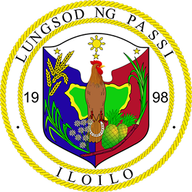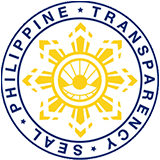Panay Island has a very rich culture heritage. Dubbed as the cradle of civilization, its glorious past is diverse. Its fertile folklore has become the envy of other cultures that many have wanted to disprove them but to no avail.
The island prides itself the epic of Hinilawod and the story of ten Bornean datus. Its imposing landscape is a gold mine of narratives that were passed on from generations and have been preserved in the hearts of its people.
The first inhabitants of the island call it Aninipay, after the name of the plant that was abundant in that area. When the Malayans came, the named it as Madia-as, which was the name of the highest peak in the island.
The name Panay was given only after the Spaniards came to the island. When Miguel Lopez De Legaspi settled in Cebu, he was faced with the problem of food and one of the boats reached Madia-as. Having found plenty of food in the place, the crew returned to Cebu and reported to Legaspi who exclaimed in thankgiving “Pan ay in este isla! (Food there is in the island!)” The first two words eventually identified the island.
But unknown to many, the batch of Spaniards who reached the place gave a different name to it. They call it “Isla de Pintados” after seeing tattoeed men whom they called pintados or “painted people”.
The art of tattooing was practiced all throughout the islang. The chronicler Miguel de Loarca, in his accounts Hstoria Pre-Hispanica de Filipinas – Sobre la Isla De Panay. Described the tattoo practice, thus: “ The men tattoo their entire bodies with beautiful figures using small pieces of iron dipped in inks. This ink incorporate itself into the blood and the marks are indelible.”
Culturally, the inhabitants of Panay used tattoos to exhibit their record in battle. More tattoo marks a man has on his body, the higher status as a warrior. The elegance of the pinado practice has raised tattooing into the level of art with order, symmetry and coordination. This art has elicited admiration. While men put tattoo all over their body, women only wear tattoo on one side of their arms as a rule in the old Panay Society.
According to one account, while a group of Spaniards who have settled in Calinog went downstream of the Jalaur River and anchored in a place called Ansig, they saw a tattooed woman winnowing pounded palay. One asked her what is the name of the place. The woman, who did not understand Spanish, thought the man was asking what she was doing and she replied, “naga-pangpasi” which means picking up unhusked rice, from pounded palay. From then on, the Spaniards called the place “Pasi” which later evolved into “Passi”.
As the Spaniards began to Christianized the inhabitants of Panay, the friars believed that tattooing was pagan practice and forced the natives to abandon the art, thus resulting to the disappearance of Pintados Culture.
However, the practice did not escape the eyes of the historians who recorded it with respect and veneration that this form of arts deserve. For many, it was a practice that was ought not only to be preserved but to be revived in some other ways to highlight the fact that during the Pre-Spanish era, an advance civilization of artistic people had already flourished in this part of the archipelago. It is in this context that Passi City, one of earliest Malayan settlements in the island, embarks on this project to showcase and revive Panay’s rich cultural legacies from its ancestors. The Pintados Culture.

